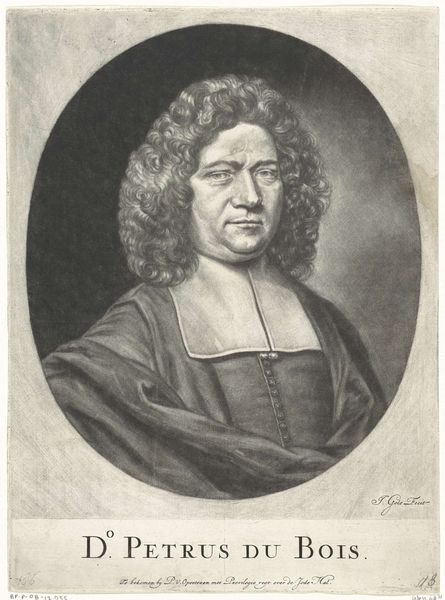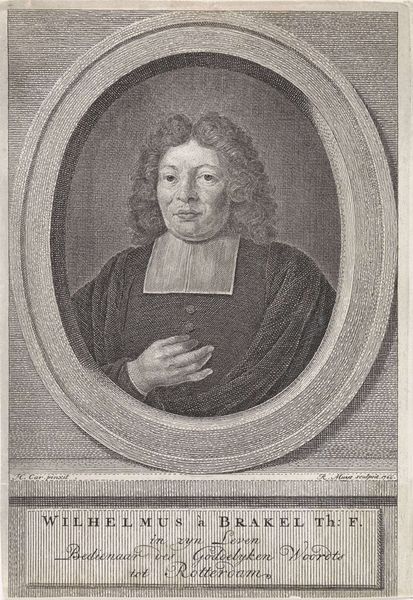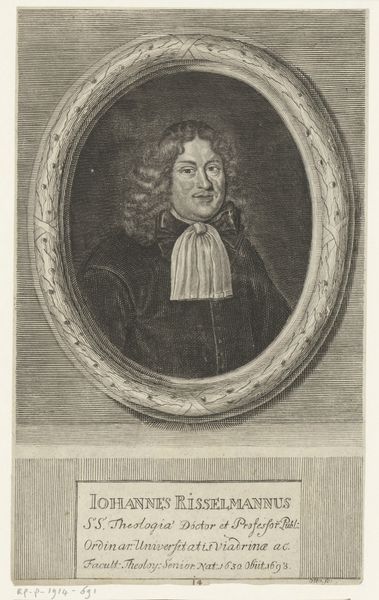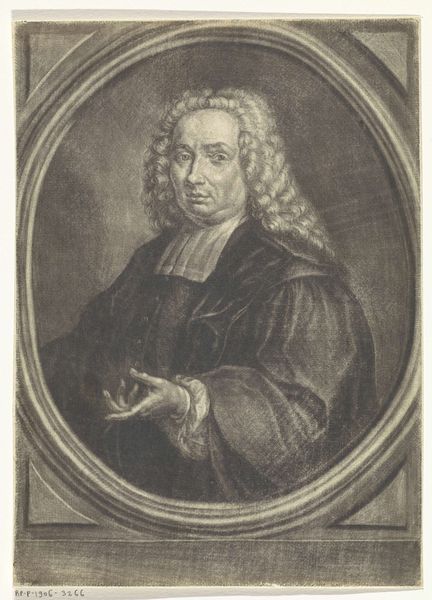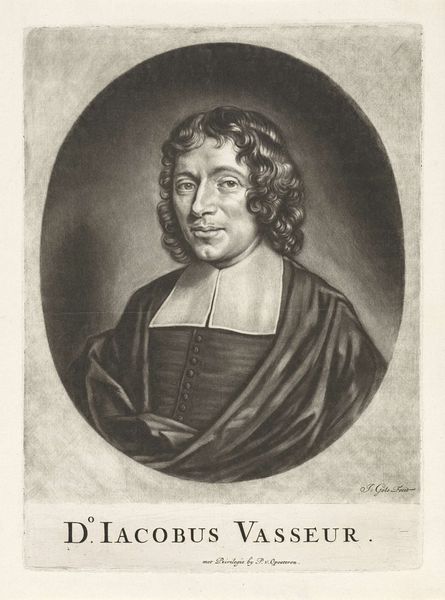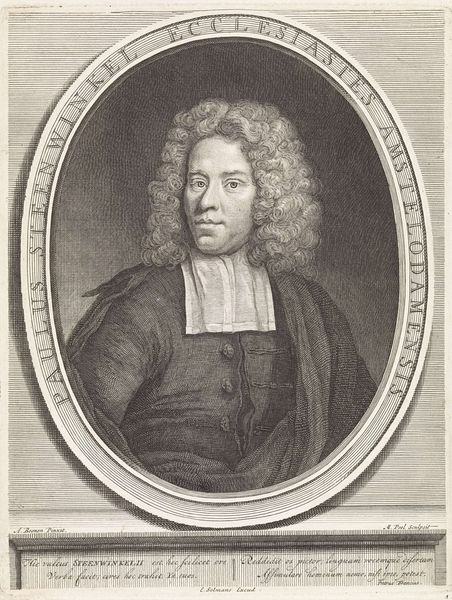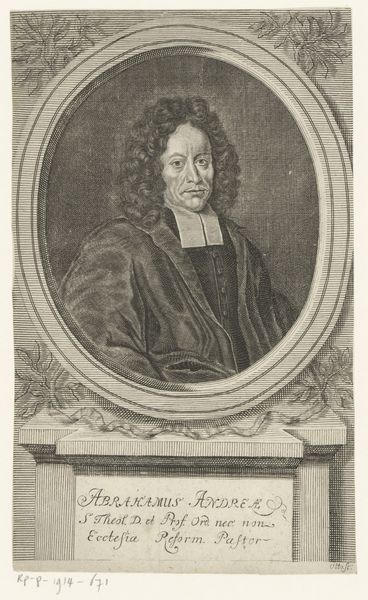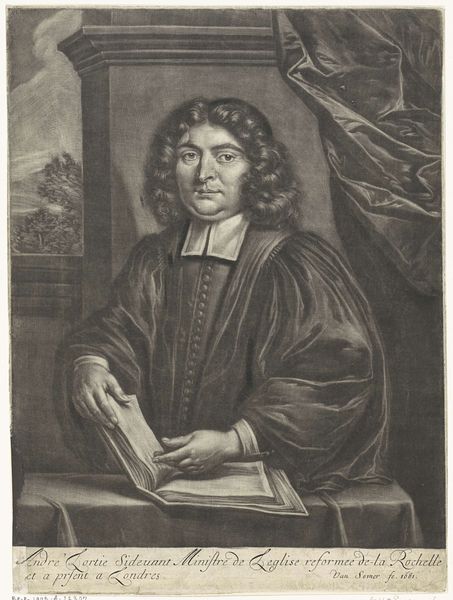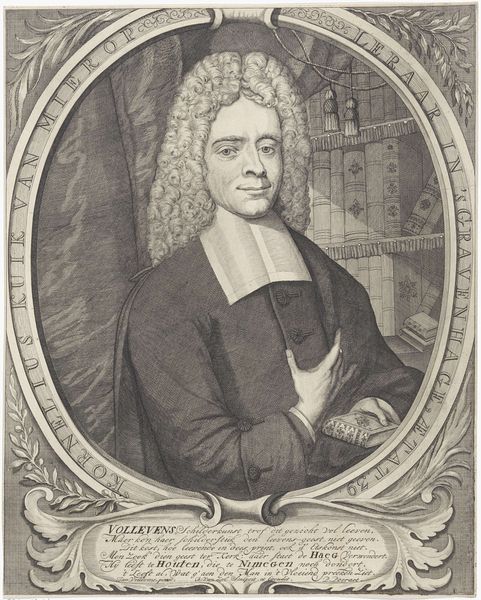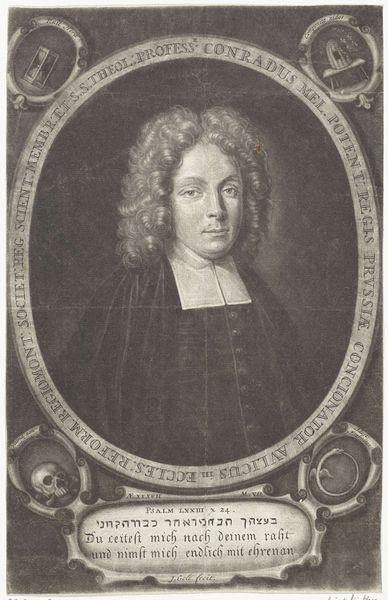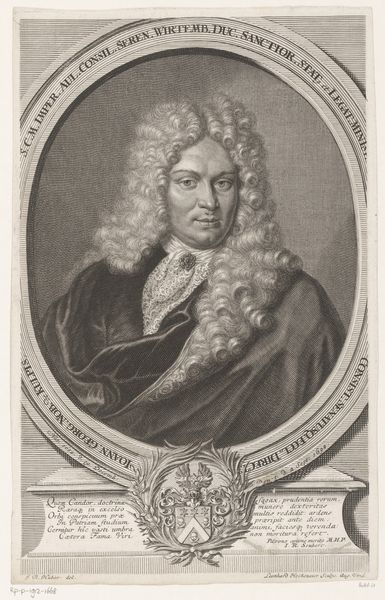
drawing, paper, ink, engraving
#
portrait
#
drawing
#
baroque
#
charcoal drawing
#
paper
#
ink
#
line
#
history-painting
#
engraving
#
monochrome
Dimensions: height 267 mm, width 188 mm
Copyright: Rijks Museum: Open Domain
Editor: This is Jacob Gole's "Portret van Abdias Velingius," created sometime between 1693 and 1704. It's a monochrome drawing, seemingly ink on paper. The detail is incredible. How would you interpret this work within its historical context? Curator: Looking at this portrait, I’m struck by the ways it embodies the power dynamics of its time. The subject, likely a person of some stature given the portrait's existence, is presented within a carefully constructed framework of social and religious identity. How does the starkness of the monochrome, typical of certain Baroque portraiture, influence your perception of Velingius? Editor: It makes him seem almost… severe. Austere, maybe? Is that the intention? Curator: It's more complex. Think about the context: The Baroque period was rife with religious and political upheaval. The visual restraint in portraiture like this one, while seemingly austere, could also signal intellectual authority and moral rectitude, traits highly valued—and strategically projected—by those in positions of power, particularly within religious circles. Does his dress code tell you something about his religious leaning and self-presentation? Editor: It does. His collar reminds me of puritanical clothing. He appears conservative, doesn’t he? Curator: The artist, Jacob Gole, through his technical skill in engraving, constructs not just an image, but also reinforces the subject's constructed identity within the larger social narrative. How does this affect your reading of his gaze? Does it feel confrontational, inviting, or something else? Editor: It feels calculated, controlled. I guess I see now that it is not just a portrait but a careful display of status and ideals. Thank you! Curator: Precisely. By understanding the visual language and its relation to social history, we can deconstruct the image to better reveal the complex realities of the time, as well as those persistent dynamics of power and representation that continue to shape our present.
Comments
No comments
Be the first to comment and join the conversation on the ultimate creative platform.
